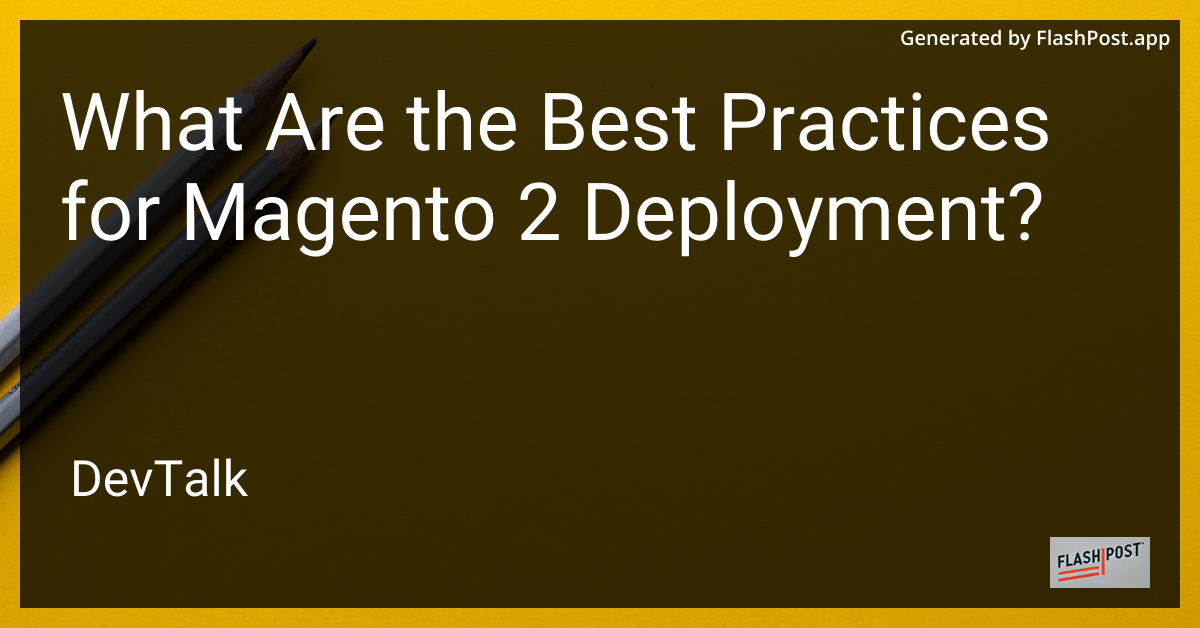What Are the Best Practices for Magento 2 Deployment?

Best Practices for Magento 2 Deployment
Deploying Magento 2 efficiently is crucial for ensuring a smooth and successful operation of your e-commerce store.
Proper deployment not only enhances website performance but also minimizes downtime and potential errors. This article will guide you through the best practices for Magento 2 deployment.
1. Pre-Deployment Preparation
a. Backup Your Data
Before any deployment process, it's imperative to back up all your data. This includes the database, media files, and other Magento related files. Backups ensure that you can quickly restore your site in case something goes wrong during deployment.
b. Use Version Control
Utilizing a version control system like Git is essential for managing code changes effectively. It enables collaboration among team members, tracks modifications, and allows for easy rollbacks if needed.
2. Optimize the Environment
a. Choose the Right Hosting Solution
Selecting the proper hosting infrastructure is a foundational aspect of successful deployment. Consider options like cloud hosting for scalability and performance. You can explore Magento deployment on Google Cloud or check various Magento deployment options.
b. Configure the Server Correctly
Ensure your server meets the Magento 2 system requirements. Proper server configuration includes PHP settings, adequate memory, and optimized MySQL.
3. Deployment Strategy
a. Zero Downtime Deployment
Strive for zero downtime deployment to keep your store live during updates. Techniques like Blue-Green deployment allow you to maintain uptime by having two identical production environments.
b. Set Up a Staging Environment
Before deploying to production, test all changes in a staging environment. This setup should mirror your live environment to ensure that what works on staging will work on production.
4. Performance Optimization
a. Use a Content Delivery Network (CDN)
Integrate a CDN to reduce server load and improve load times for global users. CDNs cache your site content at various points across the globe, speeding up content delivery.
b. Enable Caching and Indexing
Utilize Magento's caching mechanisms and ensure all indexes are up to date. This practice significantly enhances site speed and reduces server resource consumption.
5. Post-Deployment Steps
a. Monitor Site Performance
After deployment, monitor your site's performance to catch any issues early. Use monitoring tools to look out for unusual traffic spikes or errors.
b. Conduct User Acceptance Testing (UAT)
Finally, perform UAT to ensure that all features work as expected from the end user's perspective. This step is crucial to verify that business operations remain uninterrupted.
Conclusion
Deploying Magento 2 involves a series of well-planned steps to ensure a seamless transition and optimum performance. From choosing the right hosting platform, such as Vultr, or other Magento hosting, to following best deployment practices, every decision impacts the success of your e-commerce operation.
For more detailed guides, refer to resources on Magento deployment and enhance your understanding of Magento's deployment intricacies.
By adhering to these practices, you can provide your customers with a reliable and efficient shopping experience, boosting both satisfaction and business growth.